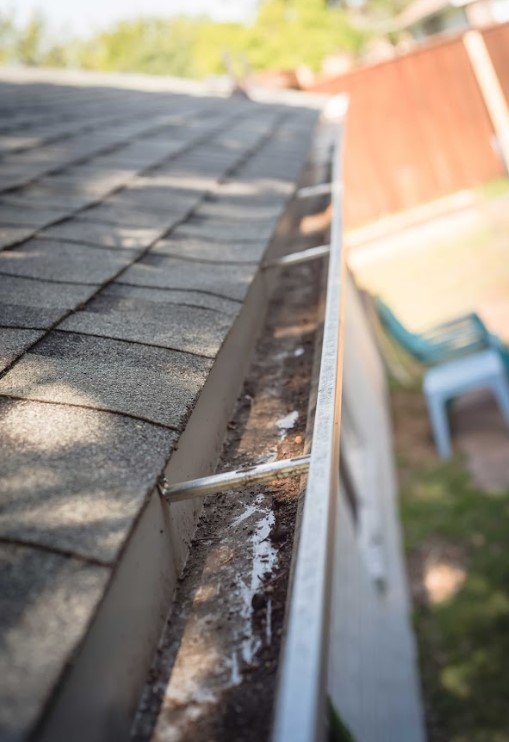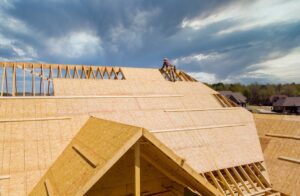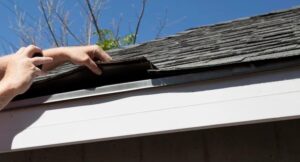Late summer in New Hampshire is notorious for high humidity, severe thunderstorms, hail, and sudden wind gusts. These seasonal weather patterns can spell trouble for your home—especially if your roof isn’t ready. Without the right roof storm prep, homeowners often face costly storm damage roofing issues, ranging from missing shingles to major leaks and structural problems.
At Dover Roofing Contractors, we’ve helped hundreds of New Hampshire residents protect their homes from summer storm damage. In this guide, we’ll share essential steps to fortify your roof before the next wave of late summer storms rolls through.
Why New Hampshire Summer Storms Are a Roof’s Worst Enemy
New Hampshire’s summer weather isn’t just about sunshine. Sudden thunderstorms, microbursts, and even the occasional tropical system bring intense rain, hail, and damaging winds. These events can cause:
- Uplifted shingles
- Dented or punctured roofing materials
- Gutter and downspout damage
- Flashing and sealant failure
- Hidden water intrusion
Worse, some of these problems aren’t visible from the ground, which is why preventive steps and inspections are essential to avoid costly storm damage roofing repairs.
Start with a Visual Roof Inspection
Before storm season peaks, perform a thorough inspection—or have a professional do it. Focus on areas most vulnerable to wind and water infiltration.
What to Look For:
- Loose, curling, or missing shingles
- Exposed or rusting nail heads
- Cracked or separated flashing
- Signs of rot or mold around roof edges
- Debris buildup in gutters or valleys
- Staining or sagging in the attic
Document what you see and schedule an expert evaluation if anything seems off. New Hampshire summer storms can turn minor issues into major damage fast.
Secure Flashing and Roof Penetrations
Flashing protects areas where your roof meets vertical surfaces—chimneys, skylights, and vents. It’s one of the first components to fail in a storm. Make sure flashing is:
- Properly sealed
- Not lifting or rusted
- Tightly secured at all seams
Apply roofing cement or have a professional reseal any loose flashing. Improperly secured flashing is one of the top causes of storm damage roofing claims.
Trim Nearby Trees and Overhanging Branches
Tree limbs that hang too close to your home can become dangerous projectiles in high winds. Heavy branches may snap and fall on your roof during New Hampshire summer storms, causing direct impact damage.
What You Can Do:
- Cut back branches at least 6 to 10 feet away from your roofline
- Remove dead or weak limbs that might fall
- Consider tree removal if roots threaten your foundation or roof drainage
While the shade may be nice, the damage from a falling limb can cost thousands in repairs and increase your insurance premiums.
Clear Gutters and Downspouts
Clogged gutters prevent water from flowing away from your roof. During a summer downpour, this leads to water pooling at the eaves, overflowing, or backing up under shingles—all of which can result in rot and water infiltration.
Be sure to:
- Remove leaves, pine needles, and debris
- Flush gutters with a hose to ensure proper flow
- Check for loose or disconnected downspouts
- Confirm that drainage directs water away from your foundation
This simple form of roof storm prep is often overlooked but can prevent thousands in storm damage roofing repairs after a big storm.

Check Your Attic for Signs of Moisture
Your attic can reveal what’s happening beneath the surface of your roof. Before peak storm activity, inspect your attic space for:
- Damp insulation
- Water stains on rafters or sheathing
- Mold or mildew odor
- Light showing through roof boards
Any of these signs may indicate existing leaks or vulnerability that could worsen during New Hampshire summer storms. Addressing these signs early can help avoid widespread interior damage.
Review Your Roofing Material’s Condition
Not all roofs are built the same. The age and material of your roof will significantly affect how well it handles storm stress.
Common Roofing Materials & Their Storm Resistance:
- Asphalt Shingles: Can lose granules, curl, or lift in high winds (especially if aging).
- Metal Roofs: Generally excellent for wind and rain but must be properly anchored.
- Slate or Tile: Strong but can crack from falling branches or hail.
If your roof is over 15–20 years old or has had multiple repairs, it may be time for a storm damage roofing assessment or replacement.
Install Roof Tie-Downs or Hurricane Clips
Although more common in coastal and hurricane-prone areas, structural tie-downs can help protect your roof from being lifted by strong winds. In parts of New Hampshire where wind speeds have increased in recent years, this step may offer extra peace of mind.
For more on structural roof improvements, visit the Federal Emergency Management Agency (FEMA) for guidance on storm-resistant construction practices.
Document the Condition of Your Roof for Insurance
Before any major New Hampshire summer storms, it’s wise to photograph your roof from multiple angles. This helps you:
- Establish a clear baseline for insurance claims
- Provide evidence of regular maintenance
- Accelerate your response if damage occurs
After a storm, update your photos with new ones to compare and share with your provider if needed.
For additional tips on preparing your home for storm-related insurance claims, the Insurance Information Institute offers detailed consumer guides.
Have an Emergency Plan for Storm Damage
Even with perfect roof storm prep, storms can still cause damage. Have a plan ready in case your home experiences:
- A leak during a storm
- Missing or damaged shingles
- A tree or branch falling on the roof
- Water entering the attic
Your Emergency Storm Plan Should Include:
- A list of emergency contact numbers (including a roofer and insurance agent)
- Tarp or plastic sheeting for temporary coverage
- Flashlights, buckets, and towels
- Access to your roof photos and insurance documents
Knowing how to respond quickly can reduce long-term costs and minimize interior damage.
Let’s Make Sure Your Roof Is Ready for the Next Storm
Late summer storms in New Hampshire are powerful, fast-moving, and often unpredictable. The time to prepare your roof is before the clouds roll in. Whether you’ve noticed signs of wear or just want peace of mind, a professional inspection can help you make informed decisions.
Dover Roofing Contractors is your local expert for storm damage roofing, inspections, maintenance, and full replacements. We understand how the weather here affects homes—and we know how to build a roof that stands up to it.
Get a free estimate now to schedule your inspection or storm prep consultation before the next big storm hits. We’ll make sure your home is protected—and your roof is ready.



